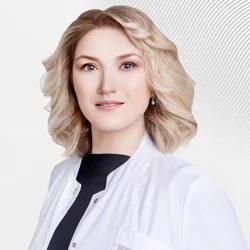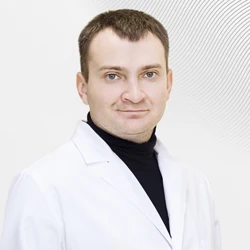Anxiety treatment at the European Medical Center:
-
Thorough diagnosis of the patient's mental state, identification of risk factors.
-
Preparation of an individual treatment program, including pharmacotherapy, cognitive behavioral therapy, and, if necessary, TMS.
-
The Clinic of Psychiatry and Psychotherapy constantly organizes trainings that teach relaxation skills and coping with anxiety symptoms.
Experiencing anxiety is a normal adaptive response of the body to changing conditions or threatening events. However, fears can pose a serious problem for a person if the level of anxiety reaches pathological proportions. This imposes restrictions on the normal functioning of the patient, which significantly reduces his quality of life. Also, the long-term existence of an anxiety disorder dramatically increases the risk of other mental disorders, such as depressive disorder (about 15 times) and pathological addictions (about 20 times).
The main anxiety disorders include the following disorders:
Panic disorder -the main symptoms of the disease include recurring bouts of irrational anxiety (panic) that are not limited to a specific situation or any specific circumstances.
Dominant symptoms:sudden tachycardia (rapid heartbeat), sweating, tremors, dry mouth, chest pain, shortness of breath, a feeling of suffocation and nausea, as well as dizziness and a feeling of unreality.
Agoraphobia is a group of anxiety disorders encompassing a number of phobias, which include a painful fear of open spaces and public places. Patients experience uncontrollable anxiety when in a crowd, refuse to visit shops and other crowded places, restrict unaccompanied exits from their homes, and have difficulty using public transport on their own. Agoraphobia is one of the most maladaptive types of phobic disorders.
Dominant symptoms: when immersed in a frightening situation, patients experience increased anxiety, increased heart rate and breathing, sweating and dizziness, and in some cases panic attacks. As a rule, such patients try in every possible way to avoid those situations that cause them to have a panic attack, which contributes to the consolidation of anxiety disorder, changes their habitual way of life and interferes with normal functioning.
Generalized anxiety disorder is manifested by a constant feeling of anxiety, tension and persistent anxiety about a variety of life events, the probability of which is extremely low. Anxiety is not limited to any specific external circumstances, so it is often difficult for the patient to outline a range of situations that trigger panic.
Dominant symptoms: the most typical complaints are a feeling of constant nervousness, trembling, muscle tension, sweating, tachycardia, dizziness, and discomfort in the epigastric region. Often the patient feels fear for his loved ones, suffers from gloomy forebodings. To make a diagnosis of generalized anxiety disorder, the described symptoms must be present for at least 6 months.
Social phobia – at the heart of this anxiety disorder is the fear of being seen by others, as well as being in an awkward position, being ridiculed or humiliated, which leads to the formation of a reaction to avoid such situations. This disorder is often combined with low self-esteem and fear of criticism. Fears can manifest themselves when eating in a public place, the need to maintain a conversation during a casual meeting with acquaintances in the presence of strangers, visiting public places and group activities.
Dominant symptoms : hand tremor, nausea (fear of vomiting may be present), imperative urge to urinate or defecate (or fear of such urge), redness of the face. Sometimes the patient mistakes one of these side effects of anxiety for the underlying disease. Avoiding frightening situations causes significant psycho-emotional stress, since the person himself is aware that his reaction is excessive and has no reasonable basis .
Specific phobiasare fears limited to narrowly specific situations, such as, for example, being in close proximity to animals of a certain biological species, being in the dark, at height, in a confined space. Specific phobias also include fear of air travel, fears about eating certain types of foods, visiting a doctor, medical manipulations, and the type of blood. When faced with frightening stimuli or when thoughts about them arise, a person's anxiety is "triggered" and the symptoms described above are observed.










.webp)

.webp)




.webp)





.webp)

